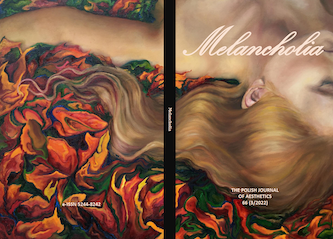The Effects of Loss in the Sublime Moment:
Jean Pierre and Luc Dardenne’s Le Fils
The Effects of Loss in the Sublime Moment:
Jean Pierre and Luc Dardenne’s Le Fils
Author(s): William EngstrandSubject(s): Film / Cinema / Cinematography, Sociology of Art
Published by: Wydawnictwo Uniwersytetu Jagiellońskiego
Keywords: Loss; Melancholia; Jean-Pierre Dardenne; Luc Dardenne; Sublime; Film;
Summary/Abstract: Luc and Jean Pierre Dardenne, in their film Le Fils (2002), reveal the sublime through therepetition of the movement/act of watching, which are the temporal shifts between grief,mourning, and melancholia. These movements and acts become, in Judith Butler’s (2002)words, “The very means that loss is registered” (470). Jean-François Lyotard (1994) de-scribes the sublime moment as “at the encounter of the two ‘absolutes’ equally ‘present’ tothought” (123) that can evolve from an ordinary perspective into a sudden awareness ofa different perspective. In Le Fils, melancholia is not a state of mind chronologically ar-rived at as much as it is part of a cluster of loss effects—coupled with grief and mourn-ing—that can be felt intermittently and simultaneously as a way of navigating the impactof loss. This dynamic state, this shifting cluster, unfolds in Le Fils as a disorientation,a metaphysical and temporal precarity. Gilles Deleuze (1986) points out that the sublimemoment “is like two presents which ceaselessly intersect, one of which is always arrivingand the other is already established” (106). In the context of loss, Deleuze’s “arriving” canbe the temporal loss cluster of grief, mourning, and melancholia, while the other present(“already established”) can be loss itself—something that is always present in its effect.Each present exists for the other, one navigating the ongoing impact of the other. Still filmframes will be presented like citations of lines from poetry or excerpts from written text tomark the sublime moment’s emergence. I will focus on three such moments in this analy-sis.
Journal: Estetyka i Krytyka
- Issue Year: 66/2022
- Issue No: 3
- Page Range: 67-82
- Page Count: 16
- Language: English

